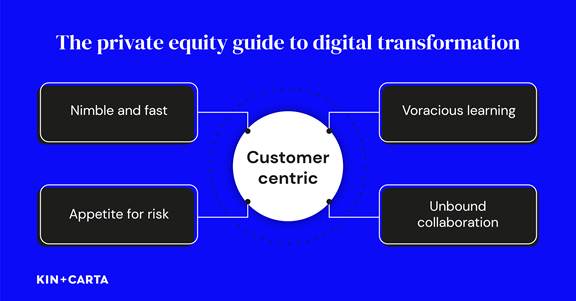Digital transformation could be one of the greatest untapped sources of additional profit for PE-backed companies. It is more relevant now than ever before due to COVID-19 accelerating digital disruption.
To enable successful digital transformation, companies must have the appropriate balance of digital capabilities and culture. In the rush to digitally transform portfolio companies, private equity funds often overlook the importance of culture which is the foundation to any successful digital transformation and frequently the hardest part. In this blog, we explore the characteristics of a digital culture and what you can do to encourage it in your portfolio or company.


